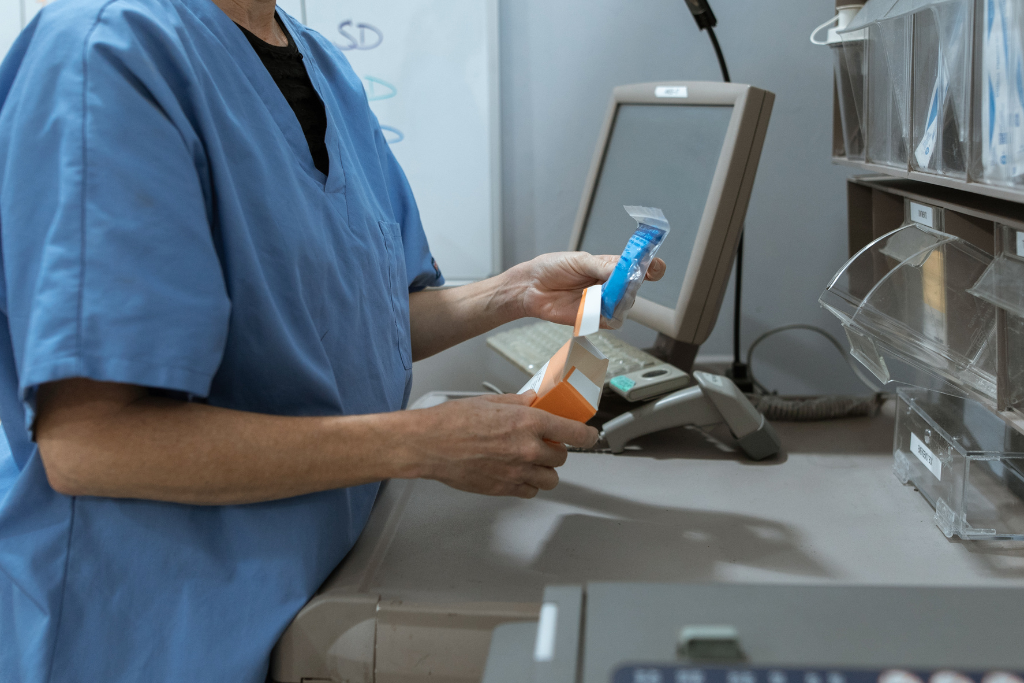An aesthetics practitioner is a healthcare professional who specializes in providing non-surgical cosmetic treatments and procedures to enhance a patient’s appearance and self-confidence. What is an Aesthetics Practitioner These practitioners work in the field of aesthetic medicine, utilizing advanced techniques and technologies to address a wide range of skin concerns, from fine lines and wrinkles to unwanted hair and body contouring.

An aesthetics practitioner is a healthcare professional who specializes in providing non-surgical cosmetic treatments and procedures to enhance a patient’s appearance and self-confidence. They utilize advanced techniques and technologies to address a wide range of skin concerns, from fine lines and wrinkles to unwanted hair and body contouring.
Scope of Practice for Aesthetics Practitioners
Aesthetics practitioners are trained to perform a variety of non-invasive and minimally invasive cosmetic treatments, including:
Dermal Fillers
Aesthetics practitioners are skilled in administering dermal fillers, which are injectable gels made from substances like hyaluronic acid, to restore volume, smooth wrinkles, and enhance facial features.
Neurotoxin Injections
They are also trained to provide neurotoxin injections, such as Botox, which work by temporarily relaxing the muscles responsible for wrinkle formation.
Laser and Light-Based
Therapies Aesthetics practitioners utilize advanced laser and intense pulsed light (IPL) technologies to treat various skin concerns, including unwanted hair, pigmentation issues, and signs of aging.
Microneedling
As experts in minimally invasive skin rejuvenation, aesthetics practitioners perform microneedling procedures, which create microscopic channels in the skin to stimulate collagen production.
Body Contouring
Many aesthetics practitioners offer non-surgical body contouring treatments, such as CoolSculpting, to reduce the appearance of unwanted fat in areas like the abdomen, flanks, and thighs.
Chemical Peels
They may also provide a range of chemical peel treatments to address concerns like acne, uneven skin tone, and fine lines.
It’s important to note that the specific treatments and procedures an aesthetics practitioner is able to perform can vary depending on their level of education, training, and licensure requirements in their local jurisdiction.
Education and Training
To become an aesthetics practitioner, individuals typically undergo specialized education and training beyond their primary healthcare qualification, such as a nursing or medical degree.
This additional training often includes:
- Comprehensive coursework in anatomy, physiology, and the science of aesthetic treatments
- Hands-on training in the safe and effective administration of various cosmetic procedures
- Extensive practical experience under the supervision of experienced aesthetics professionals
- Ongoing continuing education to stay up-to-date with the latest advancements in the field
The educational and licensing requirements for aesthetics practitioners can vary widely depending on the country or region. In some areas, aesthetics practitioners may be required to hold a medical degree, while in others, they may be trained nurses, physician assistants, or other healthcare professionals who have completed specialized aesthetic training programs.
Regardless of their specific background, all qualified aesthetics practitioners must demonstrate a deep understanding of skin biology, the mechanisms of action for various cosmetic treatments, and the ability to safely and effectively perform the procedures they offer.
The Role of Aesthetics Practitioners in Patient Care
Aesthetics practitioners play a vital role in helping patients achieve their desired aesthetic goals, whether that’s reducing the signs of aging, improving skin health, or enhancing specific facial or body features. By leveraging their specialized knowledge and expertise, these professionals work closely with their patients to develop customized treatment plans that address their unique needs and concerns.
Patient Consultation and Assessment One of the primary responsibilities of an aesthetics practitioner is to conduct a thorough consultation and assessment with each patient. This involves:
- Discussing the patient’s goals, concerns, and expectations
- Performing a comprehensive evaluation of the patient’s skin, facial features, and/or body contours
- Analyzing the patient’s medical history and current health status
- Recommending the most appropriate treatments and procedures
Tailored Treatment Plans
Based on the findings from the consultation and assessment, the aesthetics practitioner will work with the patient to create a personalized treatment plan. This plan may involve a single procedure or a series of treatments, depending on the patient’s desired outcome and the complexity of their concerns.
Throughout the treatment process, the aesthetics practitioner will closely monitor the patient’s progress, make any necessary adjustments to the plan, and provide comprehensive aftercare instructions to ensure optimal results and a smooth recovery.
Patient Education and Guidance
In addition to providing the actual treatments, aesthetics practitioners play a vital role in educating their patients about the various procedures, their expected outcomes, and the importance of proper aftercare. This education helps patients make informed decisions and sets realistic expectations, ultimately leading to greater patient satisfaction.
Aesthetics practitioners also offer guidance on maintaining the results of their treatments, often recommending complementary skincare products and lifestyle modifications to help prolong the benefits of the procedures.
Emphasis on Safety and Ethical Practices
Given the sensitive nature of aesthetic procedures, aesthetics practitioners must adhere to strict safety protocols and ethical standards to ensure the well-being and satisfaction of their patients. This includes:
- Maintaining a thorough understanding of the risks and potential complications associated with each treatment
- Carefully screening patients to identify any contraindications or risk factors
- Obtaining informed consent from patients before performing any procedures
- Providing transparent and honest communication throughout the treatment process
- Prioritizing patient safety and satisfaction over personal or financial gain
By upholding these principles, aesthetics practitioners build trust with their patients and contribute to the overall safety and integrity of the aesthetic medicine industry.
The Importance of Continuing Education and Professional Development
As the field of aesthetic medicine continues to evolve, with the introduction of new technologies, techniques, and best practices, it is crucial for aesthetics practitioners to engage in ongoing professional development and continuing education. This ensures that they are able to provide their patients with the most up-to-date, safe, and effective treatments available.
Aesthetics practitioners may attend industry conferences, workshops, and training programs to stay informed about the latest advancements in their field. They may also pursue additional certifications or specializations to expand their scope of practice and better serve their patients’ needs.
Continuous learning and professional growth not only benefit the practitioner but also translate to improved patient outcomes and increased patient satisfaction. By remaining at the forefront of their field, aesthetics practitioners can provide their patients with the highest level of care and help them achieve their aesthetic goals with confidence.
The Future of Aesthetic Medicine and the Role of Aesthetics Practitioners
As the demand for non-invasive cosmetic treatments continues to grow, the role of aesthetics practitioners is expected to become increasingly important in the healthcare industry. With advancements in technology, the range of available treatments and procedures is constantly expanding, providing aesthetics practitioners with more tools to help their patients achieve their desired results.
Emerging Trends and Innovations Some of the emerging trends and innovations in the field of aesthetic medicine that may impact the role of aesthetics practitioners include:
- Advancements in injectable treatments, such as new-generation dermal fillers and next-level neuromodulators
- The development of more precise, targeted laser and energy-based therapies for skin rejuvenation and body contouring
- The integration of artificial intelligence and machine learning in aesthetic treatments, such as AI-powered skin analysis and personalized treatment recommendations
- The growing popularity of minimally invasive or non-invasive body sculpting procedures as alternatives to traditional surgical options
- The increasing emphasis on holistic, integrative approaches to aesthetic care, incorporating elements of skincare, nutrition, and lifestyle optimization
Evolving Scope of Practice
As these innovations continue to shape the field of aesthetic medicine, the scope of practice for aesthetics practitioners is likely to expand. They may be called upon to perform a wider range of procedures, utilize more advanced technologies, and collaborate with other healthcare professionals to provide comprehensive, personalized care for their patients.
Additionally, aesthetics practitioners may play a more prominent role in patient education, helping to dispel myths and promote a better understanding of the safety and efficacy of aesthetic treatments. This educational component can empower patients to make informed decisions about their care and foster a stronger partnership between the practitioner and the patient.
Importance of Multidisciplinary Collaboration
As the aesthetic medicine field becomes more complex, the need for multidisciplinary collaboration among healthcare professionals will become increasingly important. Aesthetics practitioners may work closely with dermatologists, plastic surgeons, licensed nurses, and other specialists to provide the most comprehensive and effective care for their patients.
This collaborative approach can lead to better patient outcomes, as each healthcare professional contributes their unique expertise and perspectives to the treatment plan. By fostering strong interdisciplinary relationships, aesthetics practitioners can ensure that their patients receive the highest standard of care and achieve their desired aesthetic goals.
Frequently asked questions about What is an Aesthetics Practitioner?
What is an aesthetics practitioner?
An aesthetics practitioner is a healthcare professional who specializes in providing non-surgical cosmetic treatments and procedures.
What kind of treatments do aesthetics practitioners perform?
Aesthetics practitioners can perform treatments like dermal fillers, neurotoxin injections, laser and light therapies, microneedling, body contouring, and chemical peels.
What qualifications do aesthetics practitioners need?
Aesthetics practitioners typically have specialized training beyond their primary healthcare degree, including coursework, hands-on practice, and continuing education.
How do aesthetics practitioners ensure patient safety?
They maintain a deep understanding of treatment risks, carefully screen patients, obtain informed consent, and prioritize patient wellbeing over other factors.
What role do aesthetics practitioners play in patient care?
They consult with patients, develop customized treatment plans, provide education, and monitor progress to ensure optimal results.
Why is continuing education important for aesthetics practitioners?
It helps them stay up-to-date on the latest advancements and best practices in the rapidly evolving field of aesthetic medicine.
How are aesthetics practitioners collaborating with other healthcare professionals?
They often work closely with doctors, nurses, and specialists to provide comprehensive, integrated care.
What are some emerging trends impacting aesthetics practitioners?
Innovations like AI-powered treatments and minimally invasive body sculpting procedures are expanding their scope of practice.
How are aesthetics practitioners contributing to patient education?
They help dispel myths and promote understanding of aesthetic treatments and their safety/efficacy.
What is the future outlook for the role of aesthetics practitioners?
As demand for non-invasive cosmetic treatments grows, their importance in healthcare is expected to increase.
Conclusion:
Aesthetics practitioners are essential healthcare professionals who play a vital role in helping patients enhance their appearance and self-confidence through a wide range of non-surgical cosmetic treatments and procedures. With their specialized knowledge, advanced training, and commitment to patient safety and satisfaction, these practitioners are at the forefront of the growing field of aesthetic medicine.
As the demand for non-invasive cosmetic treatments continues to rise and new technologies emerge, the role of aesthetics practitioners is expected to become increasingly important. By staying up-to-date with the latest advancements, continuously expanding their skills and expertise, and collaborating with other healthcare professionals, aesthetics practitioners can ensure that their patients receive the highest quality of care and achieve the aesthetic outcomes they desire.
